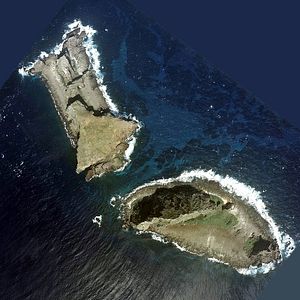Chinese maritime law enforcement vessels have spent at least 57 consecutive days outside of the territorial waters administered by Japan around the Senkaku Islands in the East China Sea. The duration marks the longest sustained Chinese patrol ship presence in the area since 2012, according to a report by Japan’s NHK public news agency.
On Friday, four Chinese patrol ships were seen in the area, according to the report. The Japan Coast Guard, which also patrols the area, is monitoring the situation.
The islands, which are claimed by China as the Diaoyu Islands, have been the site of maritime confrontations between the two countries in recent years—particularly since Japan’s purchase of the islands from a private owner in 2012.
In recent years, Chinese vessels—including People’s Liberation Army Navy (PLAN) vessels—have entered waters near the Senkaku Islands. In 2016, for the first time, a PLAN vessel entered the contiguous zone around the islands, a zone adjacent to the 12 nautical mile territorial sea.
Under the United Nations Convention on the Law of the Sea, which both Japan and China have ratified, military vessels are permitted legal passage through territorial waters provided they comply with innocent passage requirements, which prohibit a range of activities, including intelligence gathering.
Chinese maritime law enforcement vessels have entered the islands’ territorial sea in the past. The Japanese government has regularly protested these activities.
Apart from underscoring its claim to the Senkaku Islands through a regular coast guard and naval presence, China in 2013 announced an Air Defense Identification Zone (ADIZ) over much of the East China Sea. Beijing has unevenly enforced its ADIZ in the area.
The Japan Air Self-Defense Force has regularly scrambled fighters in the East China Sea amid concerns over Chinese People’s Liberation Army Air Force (PLAAF) and People’s Liberation Army Navy Air Force (PLANAF) aircraft near Japanese territorial airspace. The PLAAF and PLANAF have conducted transits into the Western Pacific through the Miyako Strait.
The United States, Japan’s treaty ally, has acknowledged that the Senkaku Islands are covered under the U.S.-Japan security treaty’s collective defense provisions even as Washington takes no position on the sovereignty of the islands themselves. U.S. President Barack Obama first made that clear during a trip to Tokyo in 2014 and former U.S. Secretary of Defense Jim Mattis underscored that message in 2017.
The Senkaku Islands themselves consist of eight uninhabited maritime features. While unproven, the area around the islands is thought to be rich in potential hydrocarbon deposits.

































